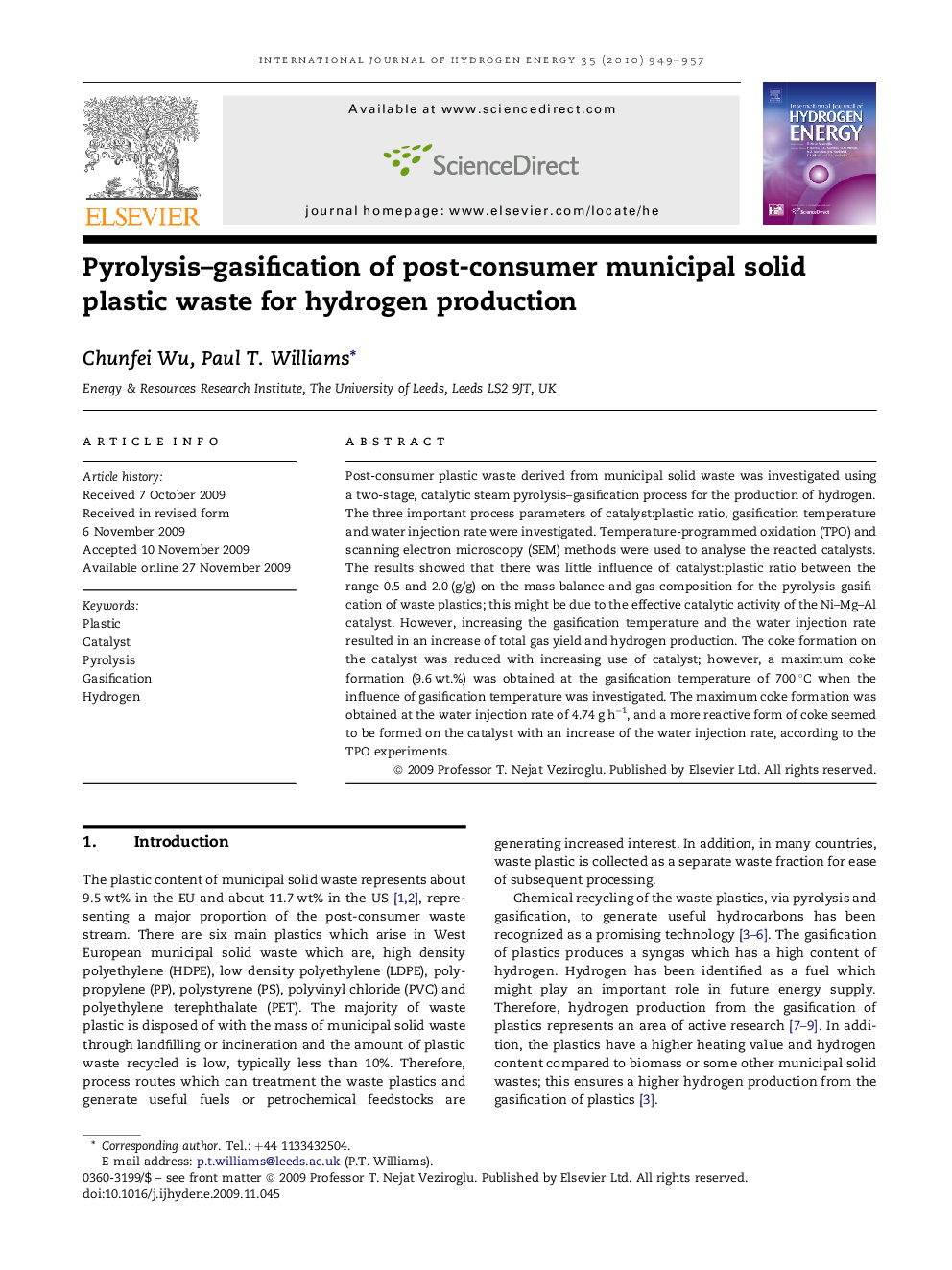| Article ID | Journal | Published Year | Pages | File Type |
|---|---|---|---|---|
| 1273486 | International Journal of Hydrogen Energy | 2010 | 9 Pages |
Post-consumer plastic waste derived from municipal solid waste was investigated using a two-stage, catalytic steam pyrolysis–gasification process for the production of hydrogen. The three important process parameters of catalyst:plastic ratio, gasification temperature and water injection rate were investigated. Temperature-programmed oxidation (TPO) and scanning electron microscopy (SEM) methods were used to analyse the reacted catalysts. The results showed that there was little influence of catalyst:plastic ratio between the range 0.5 and 2.0 (g/g) on the mass balance and gas composition for the pyrolysis–gasification of waste plastics; this might be due to the effective catalytic activity of the Ni–Mg–Al catalyst. However, increasing the gasification temperature and the water injection rate resulted in an increase of total gas yield and hydrogen production. The coke formation on the catalyst was reduced with increasing use of catalyst; however, a maximum coke formation (9.6 wt.%) was obtained at the gasification temperature of 700 °C when the influence of gasification temperature was investigated. The maximum coke formation was obtained at the water injection rate of 4.74 g h−1, and a more reactive form of coke seemed to be formed on the catalyst with an increase of the water injection rate, according to the TPO experiments.
